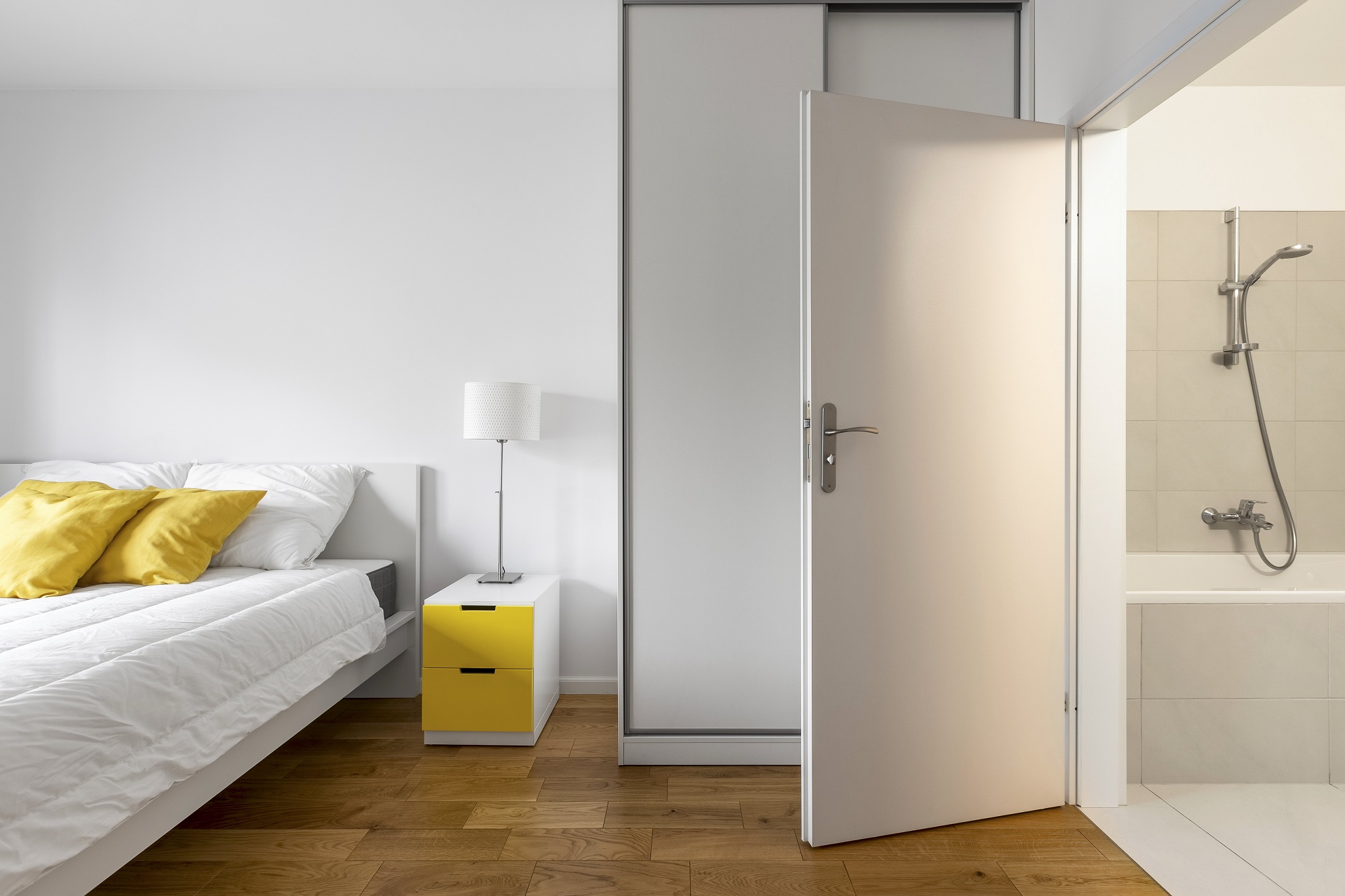Doorstops for interior and exterior doors are small and inconspicuous, yet we should not forget about them when furnishing a flat. Doors that open too wide can cause a great deal of damage. Damage to walls, furniture and objects located near the doors, as well as damage to the door leaf itself. Read this article and you will find out which doorstop will be the best, as well as how and where to install a door stop for interior and exterior doors.
What type of doorstop will be the best?
Doorstops can be easily found in stores which offer accessories used for interior decoration as well as building accessories. They are made of a wide range of materials, such as aluminium, rubber, steel or fabric that is filled with various materials to weight a doorstop down. Door stoppers also differ in terms of the place they are installed and the way they are fixed. We can choose freestanding, magnetic or self-adhesive doorstops. Depending on preferences, they can be fixed to the floor, wall or door handle. The final choice of the product should mainly depend on the amount of space for installation, the weight of the door and the dominant design style of the room.
Among the above-mentioned doorstops, the freestanding ones, the heaviest and most robust of the three, are the most popular. They will effortlessly stop even a heavy and solid door leaf. As they do not need to be fixed to the wall or floor, their position can be easily changed. Typically, they are made steel combined with rubber elements protecting the door leaf against damage. If we do not want to interfere with the structure of the floor, it is also worth considering the purchase of a self-adhesive doorstop, which is fixed to the tiles or panels using double-sided tape.
There is one more equally interesting product, namely a door handle bumper, most often made of rubber, characterised by non-invasive installation. Before the purchase, it is important to pay attention to its diameter so that it fits on a particular handle. Many manufacturers offer door handle bumpers made of transparent plastic, which are almost invisible, so they will be a perfect choice for all places where every element of interior design is thoroughly thought through.
Another group of stoppers includes those that require installation, i.e. solid fixing to the floor or wall. In the case of rubber or magnetic doorstops, one of the elements must be drilled into a specially prepared hole.
How and where to install a doorstop for interior and exterior doors?
Contrary to what one might expect, the correct installation of a doorstop can be tricky and may present some difficulties. Here are a few important things to keep in mind that will make the whole process easier for us. First of all, we should remember to install a doorstop close enough to the wall, so that the door can be opened wide. On the other hand, however, it should be far enough to prevent the handle from hitting the wall. The standard distance between the wall and the point where the doorstop is fixed to the floor is approx. 3 cm. Before installing the selected type of stopper, we must carefully read the instructions, and then mark with a pencil the place where we want to fix the stopper to the floor. We ought to remember that the stopper should be installed on an even surface, free of dust and dirt, preferably not on a joint.
Is it possible to make our own doorstop?
Of course! You can easily find dozens of tips on how to make a doorstop yourself. This applies especially to freestanding doorstops that we want to give a unique, individual touch to. At home, we can easily create doorstops made of wood or pieces of material, weighted with natural filler such as rice or peas.
A doorstop is often an inconspicuous and small object that can help us protect a door leaf, furniture and walls from damage caused by opening the door too wide.

